7 Great Things to Do in the Boyne Valley, Ireland’s Historic Heart
The Boyne Valley is one of Ireland’s richest and most important historical areas. The luxuriant and fertile land fed by the river Boyne has been occupied and cultivated by men for centuries. They left behind numerous sites and monuments, going back more than 5,000 years for some, as evidence of the Boyne Valley’s long history. The backdrop of sacred rituals, the scene of critical events, the seats of ancient monasteries and noble families, the Boyne Valley has plenty of stories waiting to be told.
Spread across county Meath and county Louth, just north of the Irish capital, the Boyne Valley is a relatively small area with plenty of great things to do and see. Thanks to their proximity with Dublin, the Boyne Valley’s best historical sites are easily accessible, be it by public transport or by car. No need to travel far and wide from the big city to get a taste of historic Ireland. Neolithic tombs, ancient castles and monastic ruins are located just a short drive away.
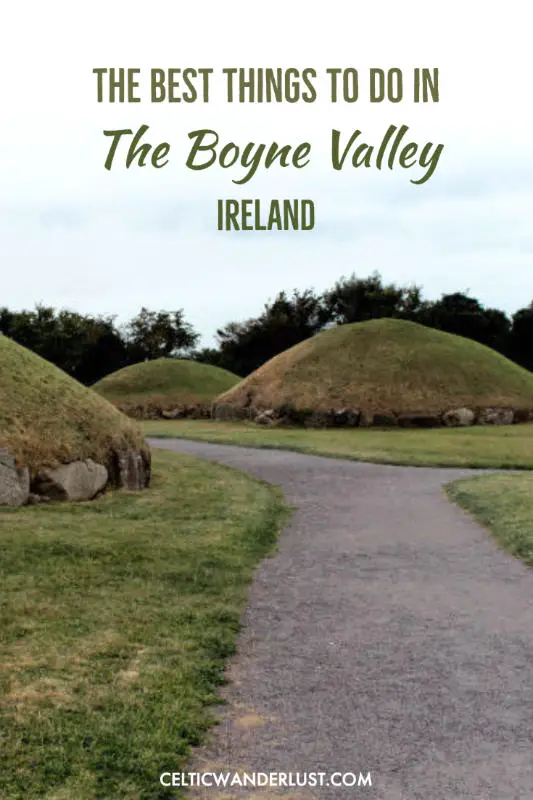
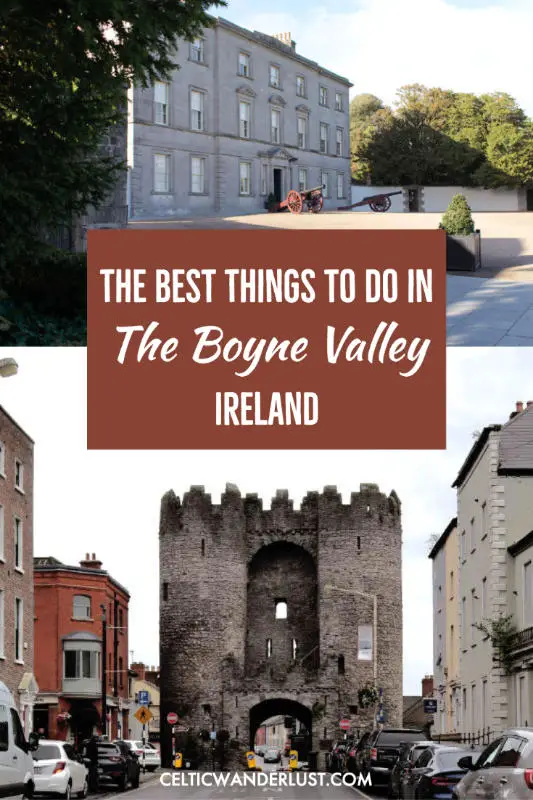
- Walk the Hill of Tara & Embrace the Magnificent View
- Visit Slane Castle and the Nearby Hill of Slane
- Discover the village of Trim & its Impressive Norman Castle
- Admire the Ruined Old Mellifont Abbey & Monasterboice Monastic Settlement
- Explore the Neolithic Passage Tombs of Newgrange and Knowth
- Take a Day Trip to Historic Drogheda
- Relive the Battle of the Boyne at Oldbride House
Walk the Hill of Tara & Embrace the Magnificent View
Located a short 40-minute drive to the Northwest of Dublin, the Hill of Tara is a great spot to start a day of discovery in the east of Ireland.
A burial, ceremonial or ritual site, no one knows for sure for what purpose the Hill of Tara was built. One thing is certain though, the site has captured people’s imagination for centuries as Ireland’s most sacred place.
Just over 150 metres in height, the Hill of Tara commands the surrounding countryside. On a clear day, the view over the green plains of Ireland seems endless. There isn’t much left of the Neolithic site to see, the panoramic view is therefore the Hill of Tara’s greatest attraction.
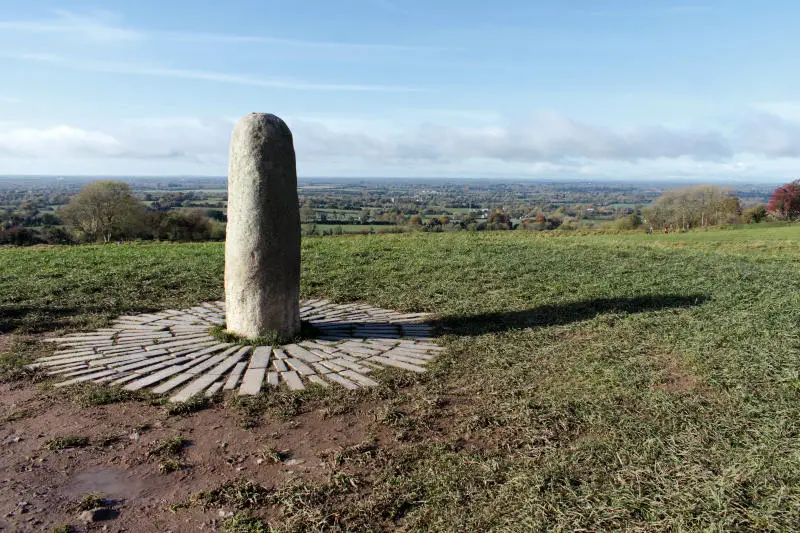
Under the grass though, millennia-old mounds surrounded by deep banks remain for those clever enough to decipher their mysterious meaning. One of the most commonly accepted explanations for its existence is that the Hill of Tara was a holy place where the ceremonial inauguration of the High King of Ireland took place.
More excavations have still to be done to uncover Tara’s secrets. Recent surveys have shown that many more monuments wait under the grass to be studied to hopefully add to our understanding of this unique site. But for now, we’ll enjoy the view from the top of the hill!
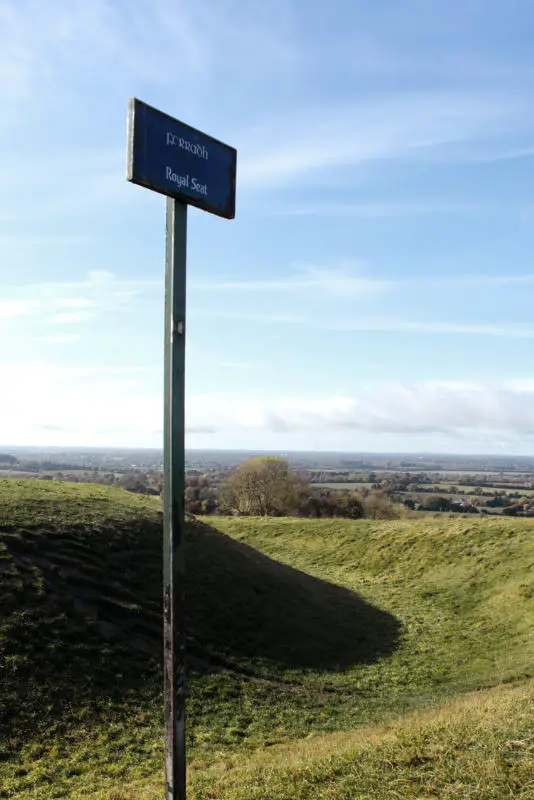
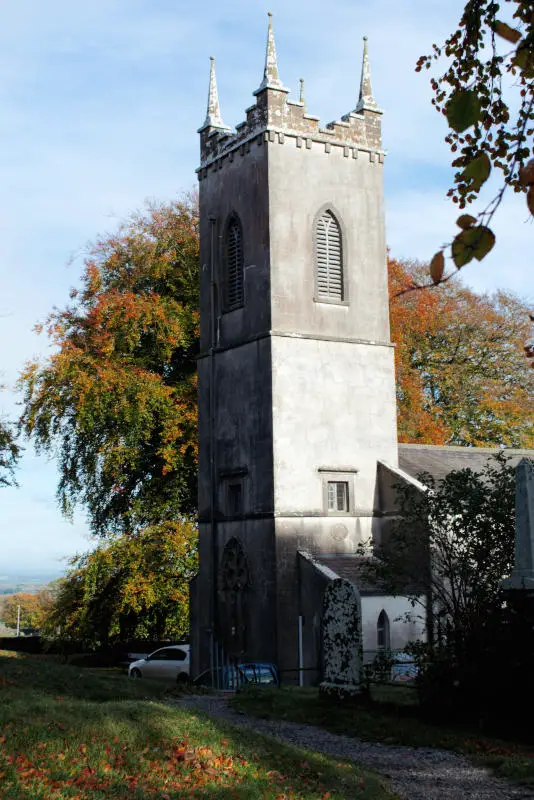
Once you’re done with exploring this historic site, why not enjoy a brunch or a coffee at Maguires. If you are just starting your day, head 20 minutes west to historic Trim or 25 minutes north to Slane and its fabulous castle.
Visit Slane Castle and the Nearby Hill of Slane
It is a smooth, one-hour drive to Slane from Dublin. Located on the bank of the River Boyne, this pretty little town is very easy to get to. With its castle, distillery and ruined monastery, Slane is a great destination for a day out and about in the Boyne Valley.
Take a Guided Tour of Slane Castle
Famous for rock stars like Queen or David Bowie who have graced its stage, Slane Castle is more than a formidable outdoor music venue with a castle for backdrop. Slane Castle is indeed a 300-year-old heritage site with amazing stories to tell.
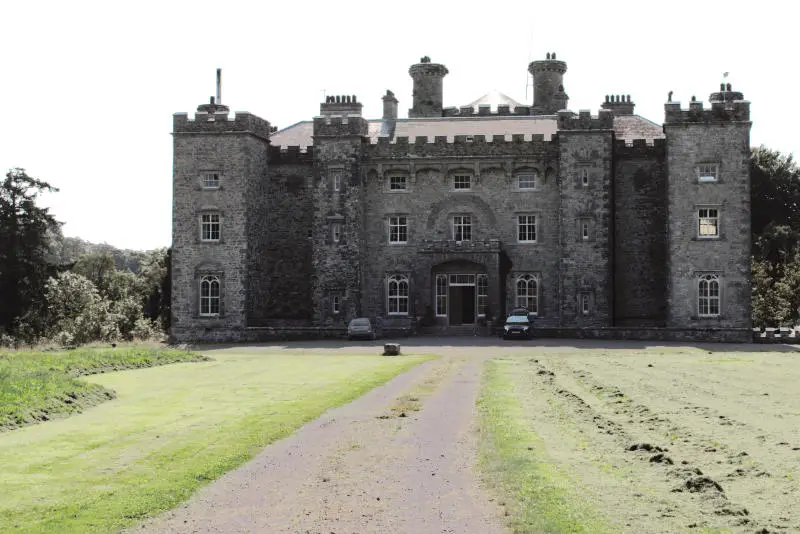
Originally the property of the Flemings, a Catholic family that happened to be on the losing side of the Battle of the Boyne, the castle was sold to the Conynghams in 1703. Remodelled in 1785, beautifully proportioned Slane Castle dominates with grandeur the tranquil River Boyne.
As you take a guided tour of the castle’s ground floor, you’ll hear stories about the Conynghams’ Scottish origins and the unabashed mistress of the English king. But drama is also on the program, as you’ll also hear about a disastrous fire that brought the castle to its knees in the 1990s. Saved by the Conynghams, Slane Castle is more than ever an exciting and vibrant place to visit.
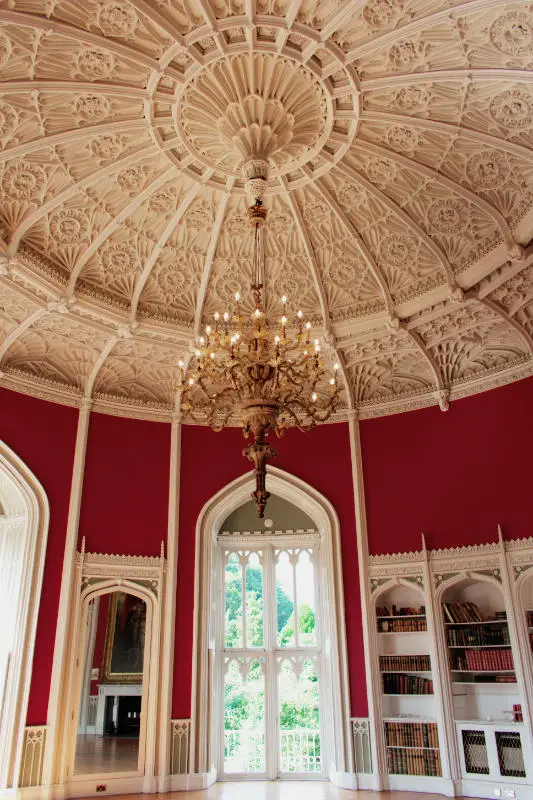
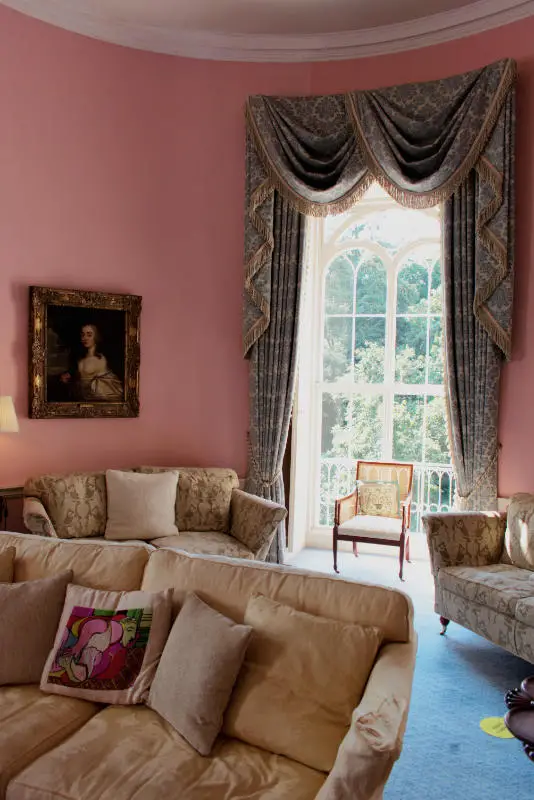
For those interested in Irish whiskey, the property doubles up as a distillery. You can tour the distillery, taste whiskey samples and learn how to make your own cocktail or your perfect Irish coffee.
Climb the Hill of Slane
Do not leave Slane without climbing the Hill of the same name. Located 20 minutes on foot or a short drive from Slane Castle, the windswept Hill of Slane overlooking rolling fields of quaint Irish countryside deserves a little detour. A free car park is available.
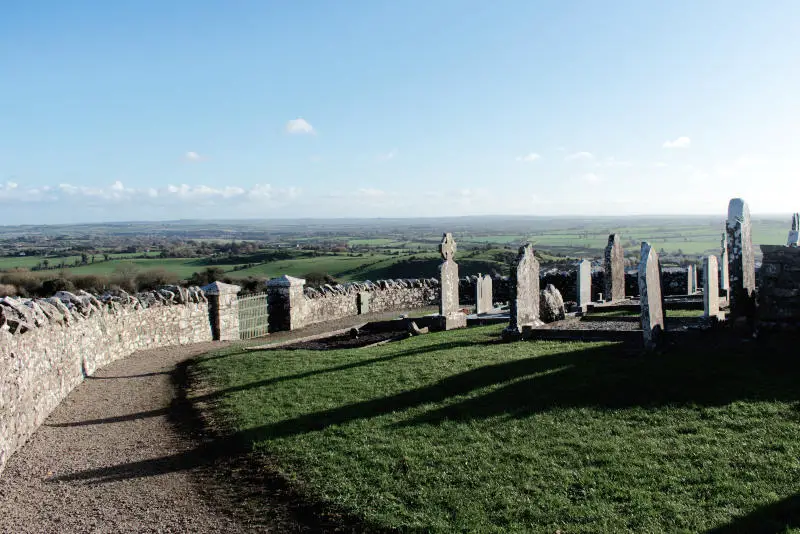
At the top of the Hill of Slane, the tower of a ruined 16th century Franciscan monastery still stands tall and proud, surrounded by tombstones like sheep huddled around their shepherd. A solitary pine tree rises high above the stones, keeping a watchful eye over those laid to rest in this idyllic location. A protective stone wall circles around the cemetery, keeping grazing animals (the real ones) at bay.
The legend has it that in 433 AD, St. Patrick lit a Paschal fire on the hill, in defiance of the Irish High King. Angry but impressed by his devotion, the king allowed St. Patrick to continue his missionary work. A monastery was then founded on the Hill of Slane by St. Erc, a follower of St Patrick, later to be replaced by a Franciscan monastery.
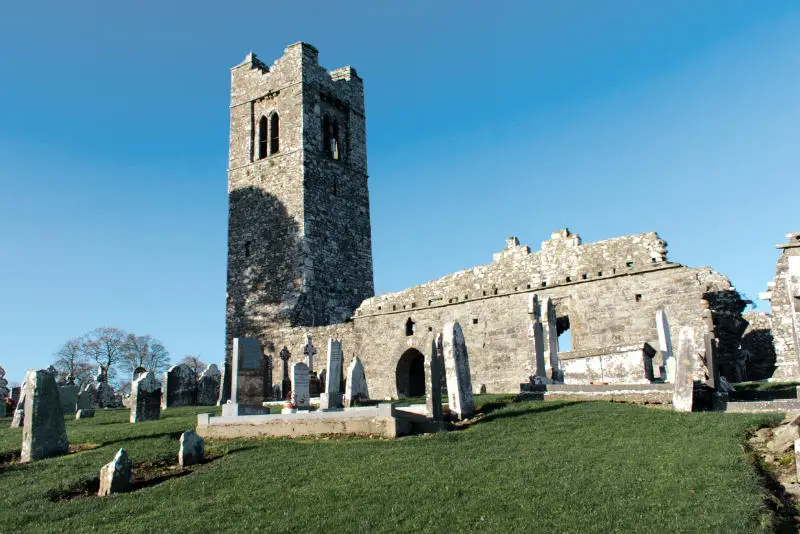
The Flemings, former Barons of Slane, also built a college for the priests next to the monastery. Only ruins remain today of what must have been an imposing building with uninterrupted views over the surrounding countryside, a fitting place for religious contemplation.
You might also be interested in:
– Unique Things to Do in Carlingford, Ireland + Top Tips to Visit
– A 3-Day Epic Wicklow Road Trip Itinerary
– Ireland Travel Books | The Best Guidebooks to Plan your Irish Adventure
– Best Gardens to Visit in Wicklow | 5 Botanic Havens to Explore
Discover the village of Trim & its Impressive Norman Castle
Trim is located on the River Boyne, just under an hour drive from Dublin. And if you don’t feel like driving, the village of Trim is one of my favourite places near Dublin you can visit without a car. You can indeed catch a bus to Trim from Busaras, Dublin’s central bus station. Departures are every hour and the journey time is just over an hour.
With its ancient stone bridge (Ireland’s oldest, it is said) spanning the River Boyne, colourful flower beds and tidy main street, Trim is the perfect destination to escape the city and unwind for the day.
As you approach the centre of town, the monumental ramparts towering high above the neatly cut grass provide clear evidence that the castle here is the main attraction. Dating from the Norman invasion in the 12th century, Trim Castle has sadly been neglected over the years. The ruins of Ireland’s largest Norman castle remain astonishing nonetheless and make Trim one of the best places to visit around Dublin.
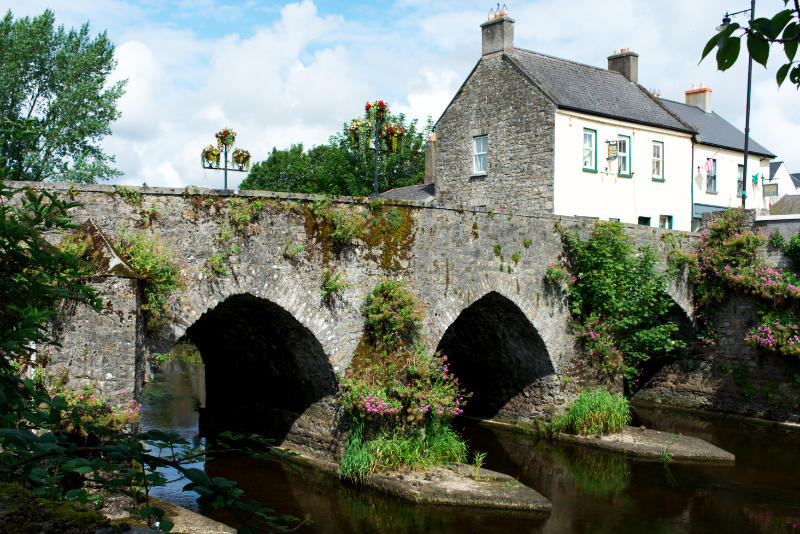
Built by Hugh de Lacy over a 30-year period to establish control over his kingdom of Meath, Trim Castle features a remarkable 4-storey-high keep shaped by 20 walls. Taking a guided-tour of the keep is one of the best things to do in the Boyne Valley, as the guide will bring visitors all the way to the top for splendid views over the town of Trim and the countryside.
The castle is surrounded by the remains of thick walls that give people a glimpse of how dangerous it might have been to live in medieval Ireland. The castle has inspired filmmakers and became the set of epic historical drama Braveheart, transforming into the medieval English town of York.
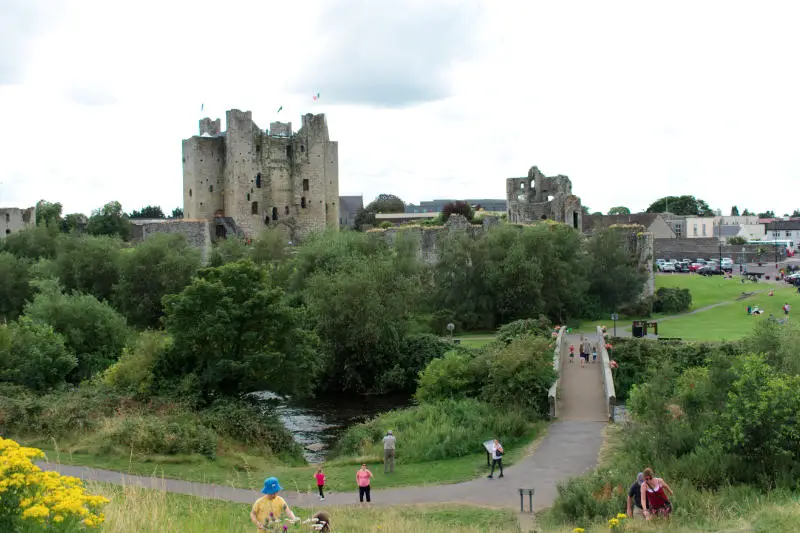
A walking trail outside the walls of the castle leads to a bridge across the Boyne and up to the remains of the Augustinian monastery of St. Mary’s. From there, you can catch some wonderful views over the castle.
Then head for some delicious sandwiches at the Olive Tree café or some tasty treats from the Harvest Home bakery. Several Irish pubs can be found along the main street if you like having a refreshing drink (with moderation) before heading back to Dublin.
Admire the Ruined Old Mellifont Abbey & Monasterboice Monastic Settlement
This is the opportunity to visit two sites on the same day. Located northwest of the city of Drogheda in county Louth, the next two sites are just a 10-minute drive apart, or a little more if you get lost in between on the winding countryside roads. They can easily be combined during a road trip from Dublin through the East of Ireland. The drive from Dublin shouldn’t take more than an hour.
Visit Old Mellifont Abbey
Found at the far end of a narrow stretch of road in the middle of the countryside, Old Mellifont Abbey immediately stuns visitors by the quietness of its surroundings. If you pose long enough, the melodic sound of the nearby river will find its way to your ears.
Founded in 1142 by St. Malachy, archbishop of Armagh, on lands donated by the King of Airgialla, Mellifont is the very first Cistercian monastery to be created in Ireland. Its architecture was directly inspired by the abbeys of the same order in France. In just 50 years, Mellifont became one of the wealthiest abbeys in Ireland, a vibrant hub of activities, home to 100 monks and 300 lay brothers.
Dissolved in 1539 and transformed into a fortified house, the abbey lies now in ruins. However, the incredible size of the remaining foundation is evidence of what used to be a thriving abbey with its church, cloister and chapter house.
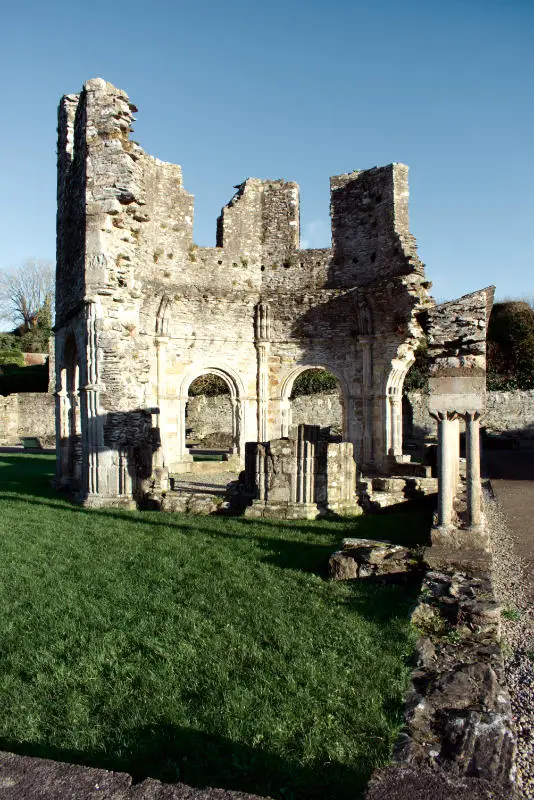
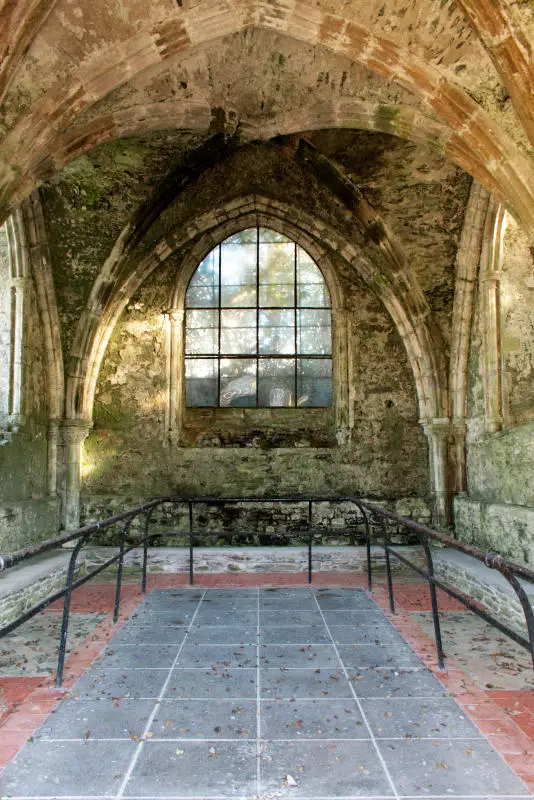
At the centre of the abbey, a large, octagonal Lavabo – where monks washed their hands before entering the church – with its round arches is certainly the most striking feature that still remains. Still standing, the chapter house features instead delicate Gothic arches framing its windows.
Old Mellifont Abbey is not to be confused with the New Mellifont Abbey located nearby. The new monastery was founded in 1938, home to a community of Cistercian monks. Make sure to follow the direction to the old abbey to see the ruins.
Pop Down to Monasterboice Monastic Settlement
North of Drogheda, Monasterboice, an early Christian settlement going back to the 5th century, conceals something rather extraordinary. Surrounded by tombstones, old and new, the ruins of a monastery founded by St. Buithe is home to a well-preserved round tower dominating the cemetery and the nearby countryside.
But that’s not all. As you make your way around the tombs, one of Ireland’s most extraordinary gems is suddenly revealed in front of you. Muirdeach’s High Cross is considered the finest example of high crosses in Ireland and one of my personal highlights of the Boyne Valley.
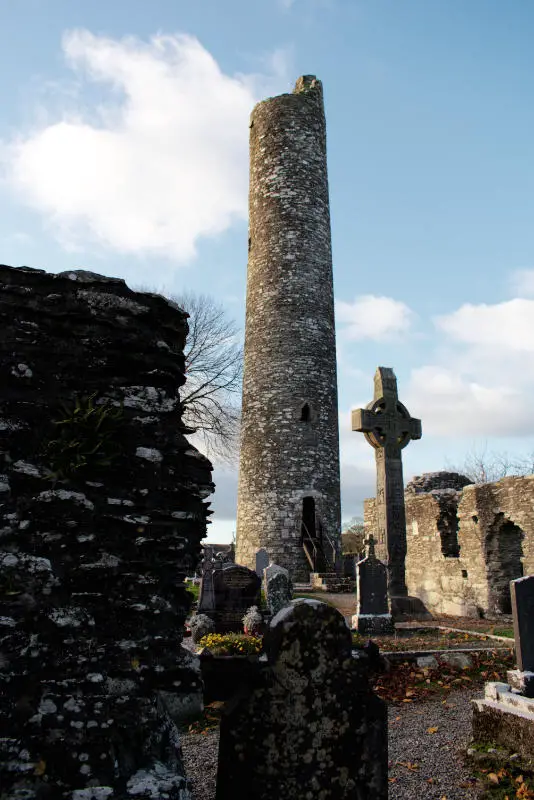
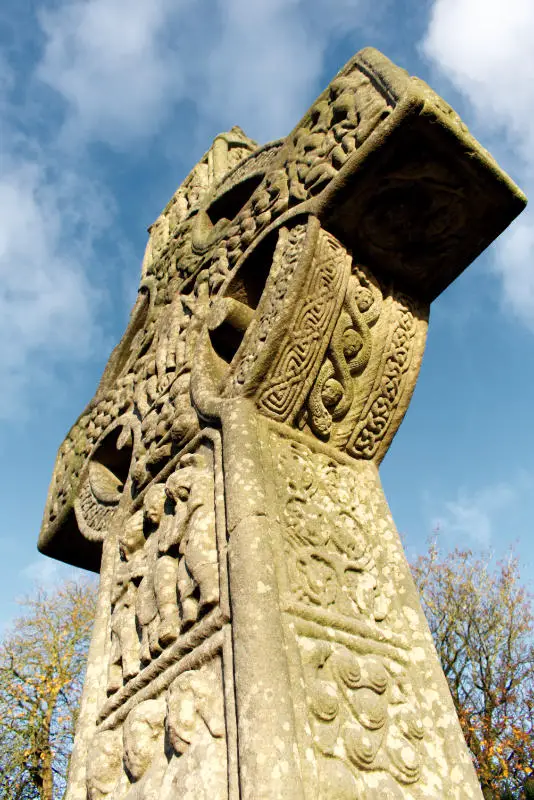
Dating from the 9th or 10th century, the cross towers at nearly 6 metres in height. It is entirely decorated in carvings representing Biblical events and themes. Rather obscure for the uninitiated, these carvings are nonetheless a real wonder for anyone who set their eyes upon them!
The West Cross and the North Cross are two more high crosses that can be found around the cemetery, though not as refined or impressive. Centuries spent in the open has unfortunately done its work.
Explore the Neolithic Passage Tombs of Newgrange and Knowth
Probably more mysterious but factually older than the pyramids of Giza, the passage tombs of Brú na Bóinne, or ‘palace’ of the Boyne, are Ireland’s most famous neolithic sites and no doubt one of the top things to do in the east of Ireland. Located 50 km north of Dublin and just 10 km west of Drogheda, the passage tombs of Newgrange, Knowth and Dowth were built some 5,000 years ago and are covered in the most intriguing, though beautiful, neolithic art.
The visit of the tombs starts at Brú na Bóinne Visitor Centre. A fantastic exhibition first introduces visitors to the people who built these extraordinary monuments, at a time when life was very much ruled by the four seasons. The exhibition also describes the fascinating discoveries made by archaeologists who had been excavating the sites for decades.
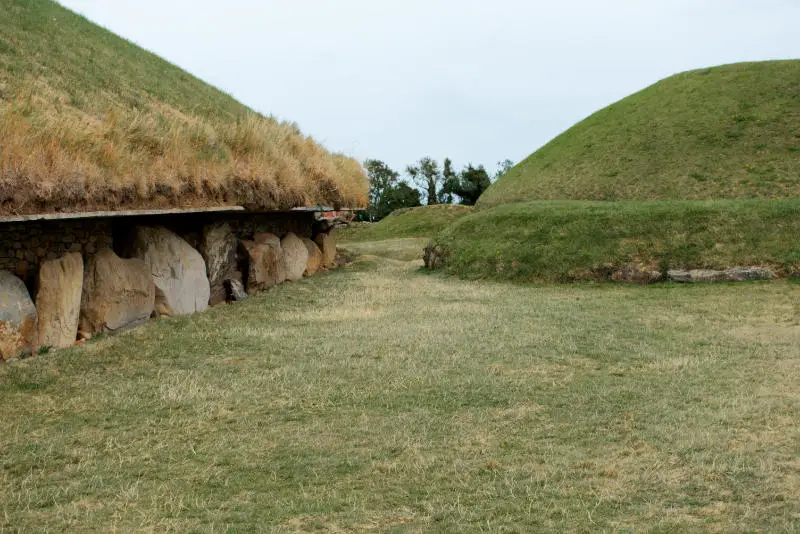
Visitors are then invited to board a bus for a 15-minute journey through the quaint Meath countryside. The bus first heads to Knowth where a guide gets ready to bring curious visitors on a 20-minute tour outside the tomb.
The size of a small hill, the tomb at Knowth has huge kerb stones placed all around it, most of them beautifully decorated with spirals, waves and other diamond shaped carvings. As people try to give these millennia-old symbols a meaning, the guide distils astonishing facts that, at the end, raise more questions than they answer them.
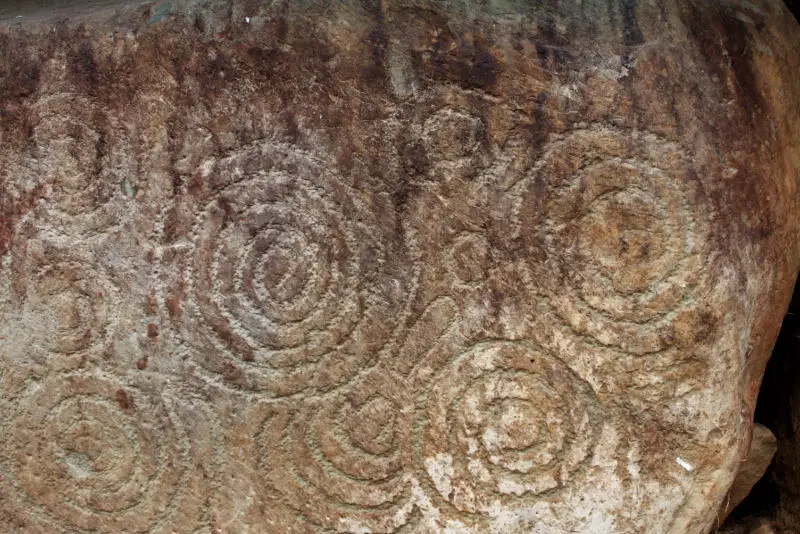
The bus then heads to Newgrange for the most extraordinary experience: the visit of Newgrange Chamber. In small groups, visitors squeeze through the narrow passage to the centre of the neolithic monument, bending their knees to better duck under large stones. At the end of the tunnel, a cross-shaped chamber allows the small group to gather and listen attentively to their guide.
Under a watertight corbelled roof that has not leaked a single raindrop in 5,000 years and keeps 200,000 tons of stones and soil from collapsing on us, the lights are switched off. Plunged into complete darkness in what archaeologists established to be a burial site, the group sounds nervous, only slightly reassured by the guide’s voice.
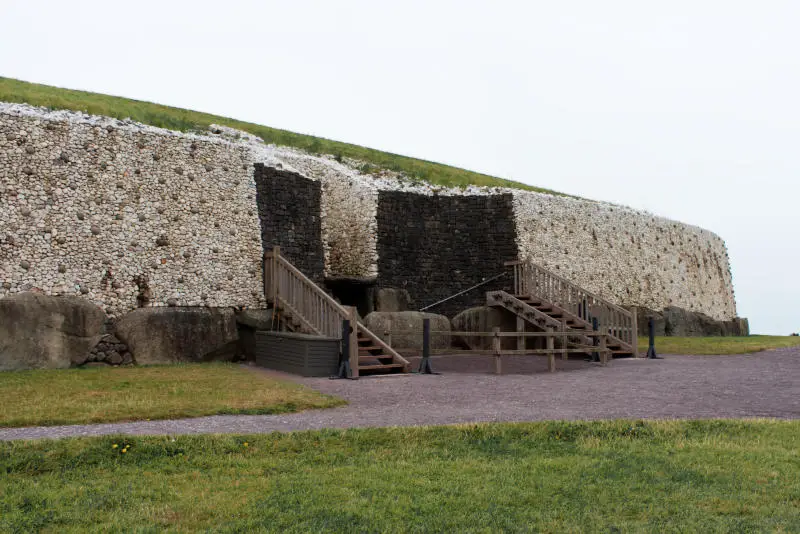
A beam of light is then cast inside the tomb, hitting the floor and the end wall. First dim but growing slowly in strength, the light gradually fills the chamber with timeless mysticism as excitement grows amongst the visitors. The beam of light replicates for a couple of minutes the ray of sunlight that enters the tomb at dawn on the winter solstice through a perfectly aligned opening above the doorway.
Still baffled by the precision of the architects who devised this monument 5,000 years ago, the group is reluctantly led back outside the tomb for a last stroll around this enigmatic site before returning to the Visitor Centre.
Take a Day Trip to Historic Drogheda
On the Dublin-Belfast train line, the town of Drogheda is easily accessible by public transport. With a journey time under an hour and frequent departures from Connolly Station in Dublin, Drogheda is an easy day trip from the Irish capital.
Located at the mouth of the River Boyne, Drogheda, which means “Bridge of the Ford”, is the gateway to the Boyne Valley. Although nearby historic sites like the Battle of the Boyne Visitor Centre and Brú na Bóinne are legitimately drawing the crowds to the area, I found myself to be one of few tourists wandering around historic Drogheda, maybe for the better.
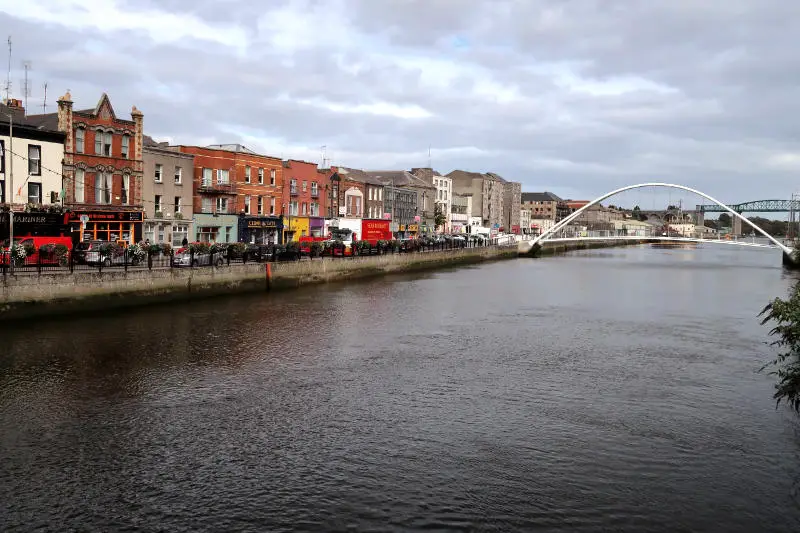
An Anglo-Norman stronghold in the 12th century, Drogheda was originally two separate towns on each side of the River Boyne. The story goes that the inhabitants hated each other until their enmities were finally put aside, and the towns were combined in 1412. Drogheda is mainly remembered in the collective mind as the place of a tragic slaughter: Oliver Cromwell, who besieged the town in 1649, cruelly ordered the massacre of a huge number of its inhabitants once his army breached its walls.
With plenty of shops, cafés and restaurants lining up West Street and Laurence Street, Drogheda town centre is buzzing with activities and a great spot for a delicious lunch. At the end of a hidden alleyway off West Street, for instance, the Bare Food Company offers a “clean eating experience” with healthy and fresh food with no additives served daily in their quirky and relaxing café.
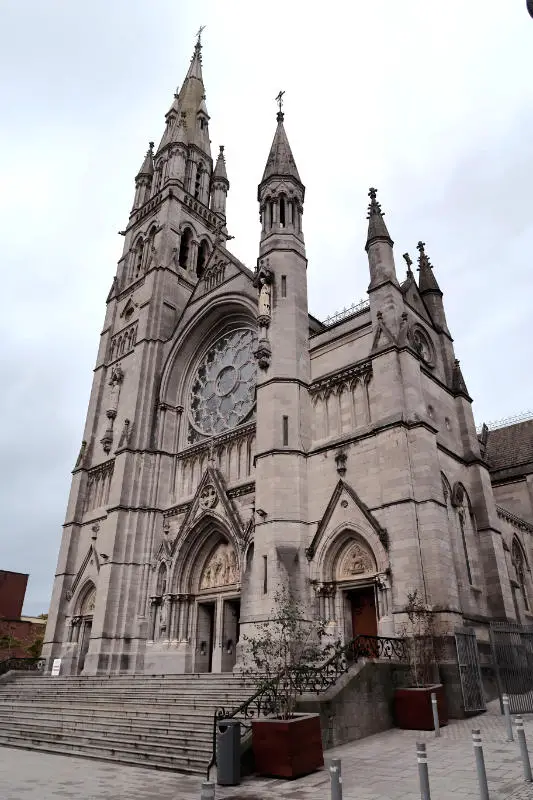
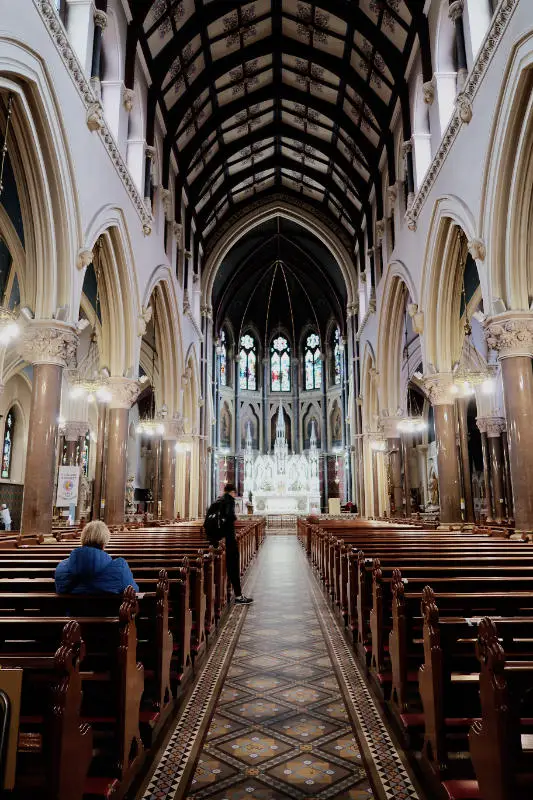
Drogheda is well-known for its magnificent St. Peter’s Church, which houses the shrine of St. Oliver Plunkett, archbishop of Armagh who died as a Catholic martyr, executed in England in 1681. The church is also home to a relic of the famous True Cross. The current building dates from the 19th century and partly incorporates an early church from the 18th century. The gothic style church, with its painted ceiling and slim, tall archways, is certainly one of the most beautiful in the country.
Another monument unique to Drogheda is St. Laurence’s Gate which dates from the 13th century. The two massive towers linked together by a wall incorporating an archway at its centre is what is known as a barbican. The fortified gateway worked as an outer defence just outside Drogheda’s city wall. Splendidly preserved, the monumental gate is the only one of its kind left in Ireland.
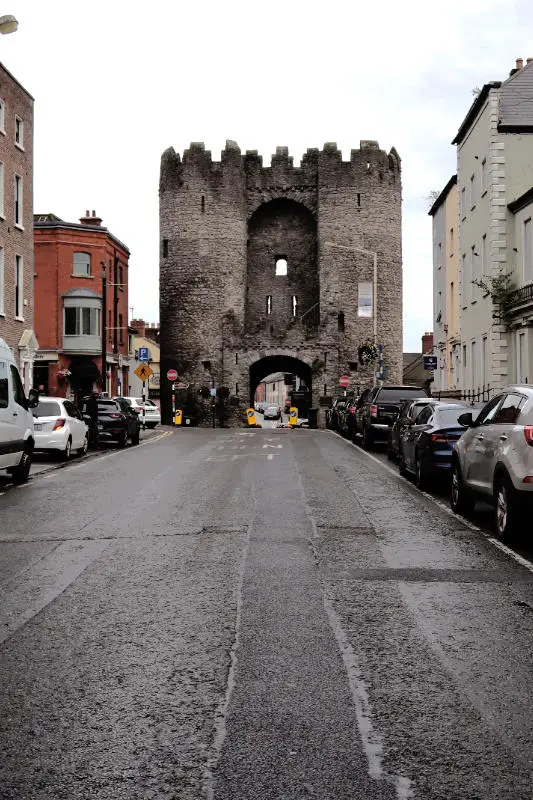
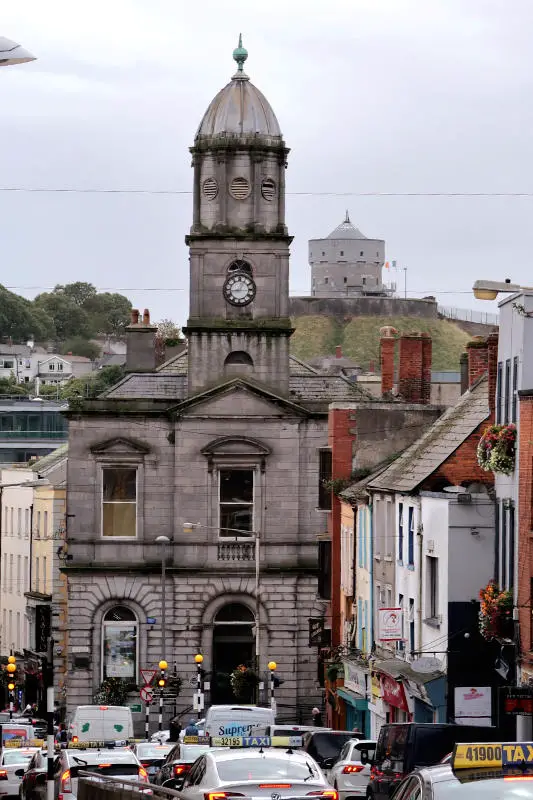
Other interesting monuments not to be missed are the Magdalene Tower, a 14th century belfry tower, which was once part of a Dominican Friary, the Tholsel, an 18th century building home to the Tourist Office, Highlanes Gallery, an art gallery inside a former 19th century Franciscan church.
Finally, don’t forget to head to Millmount Museum to discover the history of the town. The little museum is located in an old stone house at the foot of Millmount Fort, a Martello Tower. The mount that overlooks the town was previously the site of a fortified Norman castle, first built out of wood, then in stone. The garrison stationed here was massacred by Cromwell when he took the town in September 1649.
Relive the Battle of the Boyne at Oldbride House
What if? What if William of Orange, the Protestant king of England, had been killed at the Battle of the Boyne in 1690 and his Catholic father-in-law, James II, had regained his throne? What would this have meant for Catholic Ireland? Religious freedom? Would the Penal Laws have never existed?
These are some of the questions I am left with after visiting the exhibition at Oldbridge House, a classic 18th century Palladian mansion near Drogheda that houses the Battle of the Boyne Visitor Centre, and only a 15-minutes drive from Brú na Bóinne. The house was built after the battle, but its location at the centre of where it all happened makes it a logical fit for such an educational endeavour.
The exhibition gives visitors the context behind the biggest battle that ever happened on Irish soil, the nations involved, the forces on the ground and the arms used, how the battle unfolded and, ultimately, the victory of the Williamites over the Jacobites. A 15-minute film re-enacting the battle itself is suspenseful and thrilling.
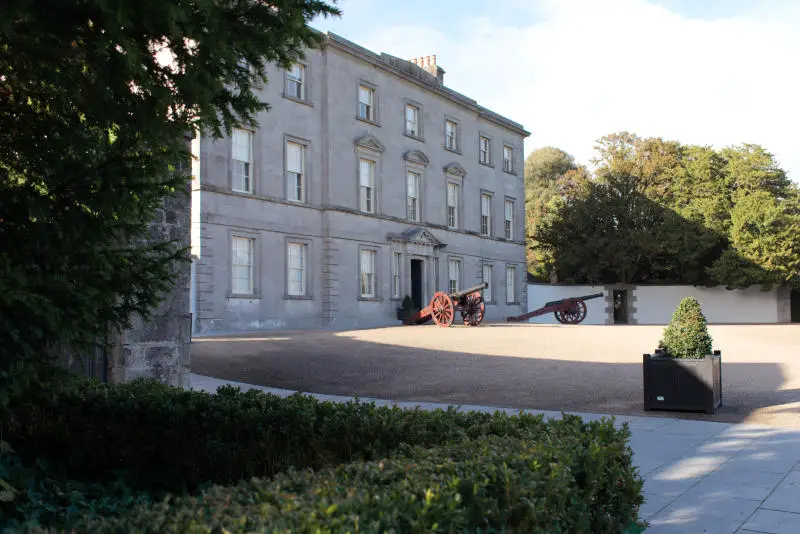
But that’s not all that Oldbride House hides. The estate includes a magnificent walled garden with an orchard, meticulously shaped trees, colourful flowerbeds and herbaceous borders, a joyful and soothing landscape after reliving the bloody events of 1690.
Glorious 300-year-old yew trees, which predate the house, can be found around an octagonal sunken garden, a unique feature you won’t see anywhere else in Ireland. A modern tea room with large bay windows facing the garden is a great spot for a snack with a view, and a very convenient one when driving from Dublin to Belfast.
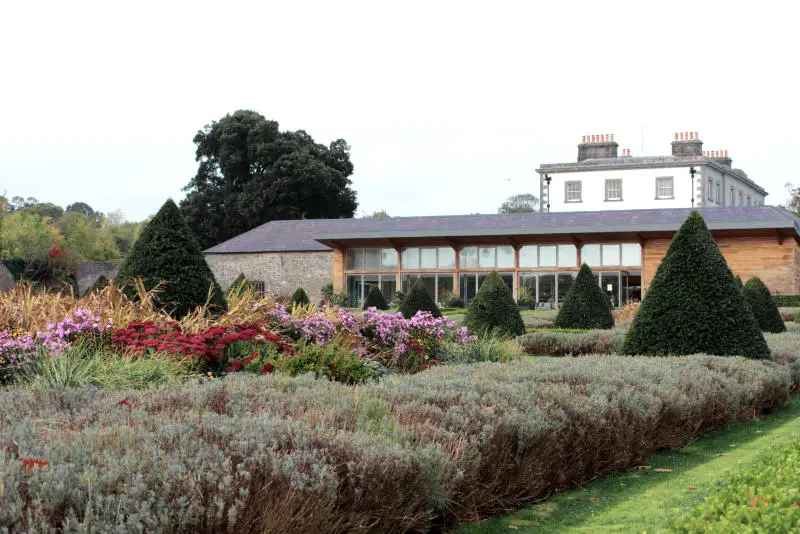
The estate also comprises a vast parkland with walking trails for those keen on exploring the ground and the core battlefield. While you have to pay a small fee for the exhibition, you can park your car and explore the estate for free.
There are a lot of great things to do in the Boyne Valley. It took me a few months to visit all the aforementioned sites, going back to this historic part of Ireland with always the same excitement and curiosity. If you have a few days to spend in Dublin, the Boyne Valley is a natural and easy destination to explore if you love history and splendid views.
Another part of Ireland I also recommend visiting while in Dublin for a few days is county Wicklow, just south of the capital. The best historical places to visit in Wicklow are only a short distance from the big city and steeped in history.
Disclaimer: This post may contain affiliate links. If you click on a link, I earn a little money at no extra cost to you.
RELATED POSTS


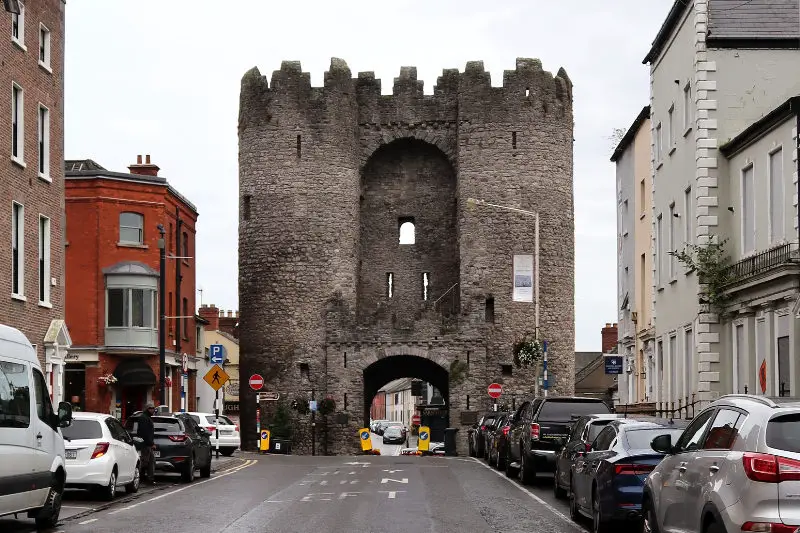
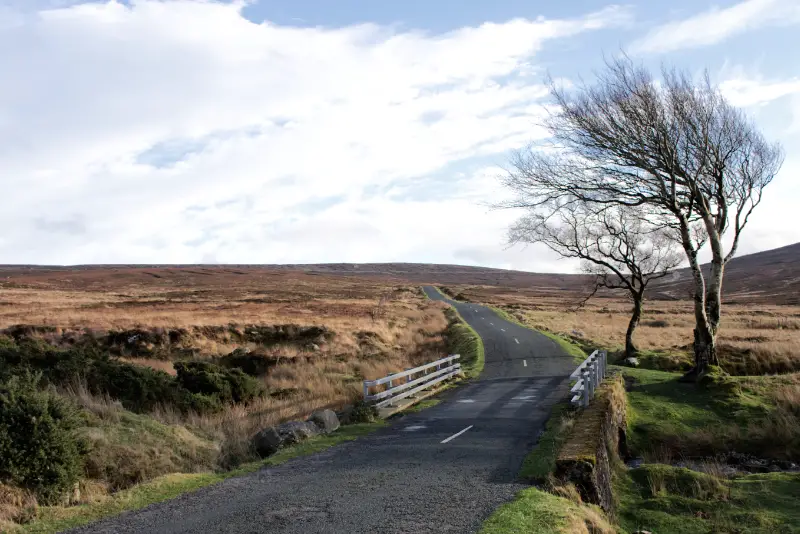
Leave a Reply